CPR CERTIFIED
By Jo Strausz Rosen
Imagine you’re at a family dinner and one of your relatives suddenly stops breathing. Someone calls 911 and they send emergency personnel. During the time it takes for them to reach you, you can make a life-saving difference – if you know CPR.
Cardiopulmonary Resuscitation (CPR) is a lifesaving technique most people can do to save the life of someone experiencing cardiac arrest. Signs of cardiac arrest include chest pain or discomfort, rapid or irregular heartbeats, unexplained wheezing, shortness of breath, lightheadedness, or dizziness, fainting or near fainting.
When a person’s heart and breathing have stopped, CPR, performed properly, keeps blood and oxygen flowing to the brain and through the body until emergency medical personnel arrive (in an emergency, someone should call 911 immediately). According to the American Heart Association, CPR can double or triple the chances of survival for someone in cardiac arrest.
The CPR process varies for adults, children, and infants. The primary difference is how chest compressions are performed – with two hands (adults), one hand (children), or thumbs/fingers (infants).
There are two types of CPR, and both are potentially lifesaving:
- Hands-only CPR involves pushing on the chest in a rapid motion. These movements are called chest compressions. Hands-only CPR can help get blood circulating.
- Traditional CPR alternates chest compressions with mouth-to-mouth breaths. This type of CPR can give the body more oxygen in the critical period before help arrives.
People who have no CPR training, or who received training many years ago, should use hands-only CPR. It’s also best for those who have had CPR training but are not comfortable enough to use it in an emergency. People with training in traditional CPR, and who are comfortable with the method, can use this technique. Hands-only CPR is appropriate for adults and teens in distress. Traditional CPR can be used with anyone in cardiac arrest, including adults, teens, children, and infants.
At JSL we have medically trained professionals on hand. We also offer American Red Cross training in CPR and First Aid to our staff, and many of us have taken the courses multiple times. I took the CPR training two years ago and this week took a refresher course presented by JSL dining services support leader and development manager, Jodi Panter, who updated our class on the skills necessary to perform CPR and other first aid necessities.
Do you feel you could size up a scene during an emergency and take the action necessary to keep someone alive, long enough for professionals to take over? Could you perform CPR and use an AED? Do you know the proper placement of your hands on the victim, the depth of the chest compressions and the number of compressions per minute needed to provide CPR? Could you provide rescue breaths appropriately? Consider taking the CPR and first aid training if you’re physically able to perform the chest compressions or renewing your certification if you have taken the course before. In addition to CPR, Red Cross certified training also teaches techniques for saving the life of someone showing signs of choking. If you are older or have a disability, you may still be able to perform CPR, but you should check with a medical professional or the Red Cross first to make sure you won’t harm yourself while trying to save another’s life.
The American Red Cross has a website where you can find training and certification classes nearby. The site has a store where you can purchase emergency essentials such as a breathing barrier or face shield inexpensively. It’s great to keep these life-saving tools nearby in your pocket, purse or backpack. The American Red Cross CPR Keychain puts everything we need to perform CPR right in the palm of our hands. https://www.redcross.org/store You can even download the First Aid app from the American Red Cross on your mobile phones.
Saving another’s life is the highest mitzvah we can perform – and most of us with the physical ability and proper training can learn to do it. I hope you’ll join me and our JSL staff who are ready to save a life.
Shabbat Shalom.





